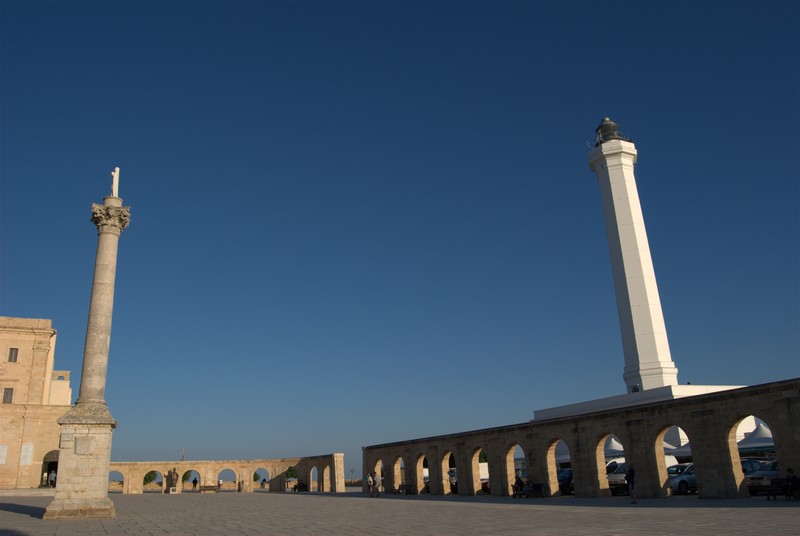From Ugento, still moving southwards, we come to Santa Maria di Leuca the outermost limit of Italy, where the waters of the Adriatic meet those of the Ionian Sea. On a clear day the dividing line between them is visible. Santa Maria is charming with its Moorish villas, which are set off by the white cliffs, and with its succession of grottos which can be found along the coast.
The Grotta del Diavolo, (Devil’s Grotto), is also easily accessible overland via an opening about 4 metres high and 2 metres wide and by a tunnel which slopes downwards for several metres, into a domed cave. Excavations have unearthed a huge range of tools and ceramics used by Neolithic man for the hunting and cooking of game (deer, oxen, goats and boars)
The Grotta del Fiume, (River Grotto) so called because of a trough which dominates it, a bed carved out by an ancient river on its way to the sea.
The Grotta del Presepe (nativity) rich in interesting shapes and colours.
The Grotta Tre Porte (3 doors), which owes its name to the gigantic calcareous passages by which you enter and where the water is an intense blue. On the North wall of the internal hollow, at about 3 metres above sea level, there is a gallery which finishes after about 30 metres in a large partially circular room with stalactites and stalagmites.
The Grotta dei Giganti (Giants’ Grotto) which owes its name to the bones and teeth of pachyderms found in it. They were in detrital material mixed in the red-violet earth which filled the grotto during a phase when the seawaters were receding. In the lower part of the grotto numerous Palaeolithic hearths have been found with carbon and burnt bone, while the upper part has yielded ceramic pots going back to the Bronze Age. The grotto was also lived in thousands of years later, as the various human bones show, as do the Byzantine pottery and the bronze coins of Constantine 7th and Romano 1st, all found inside.
The Grotta della Stalla, (Stable Grotto) has a large room with stalagmites and is easily accessible at low tide offering enchanting plays of light.
Situated in the inlet between Punta Meliso and Punta Ristola, the Grotta del Drago, (Dragon Grotto) so-called because of the rock inside it which resembles a dragon’s head, is about 40 metres deep, with an opening of 30-40 metres. It owes its beauty to the blue-green colour of the water, which is also reflected on its walls.
To the East of the promontory, towards the Adriatic, is the Grotta Grande del Ciolo where evidence of ancient civilization has been found.
Also worth a visit are the Grotte di Terrarico, the Grotte di Verdusella, the Grotta di Ortocupo, Grotta la Cattedrale and the Grotta della Vora, a cavity more than 25 metres high with a ceiling characterized by a pothole which creates fantastic plays of light.
Il faro (the lighthouse) which marks the ‘parting’ between the Ionian and the Adriatic, dominates the landscape, and the sanctuary dedicated to Saint Mary (S.Maria) (built in 1720) is settled on a white rock and is also known as ‘de finibus terrae’ (Land’s end). The Santuario di S.Maria is positioned at one ‘end of the world’ with at its other ‘end’ another sanctuary in Normandy on a rock in the Atlantic, the Point de Raz. According to popular belief it is necessary to make a pilgrimage there at least once in your life in order to gain entrance to Paradise.



